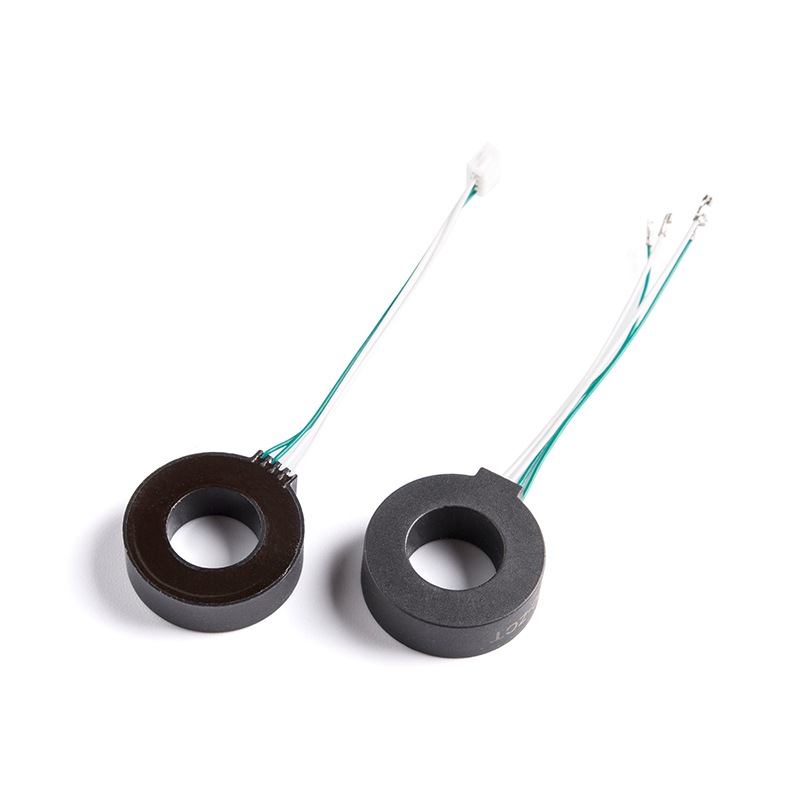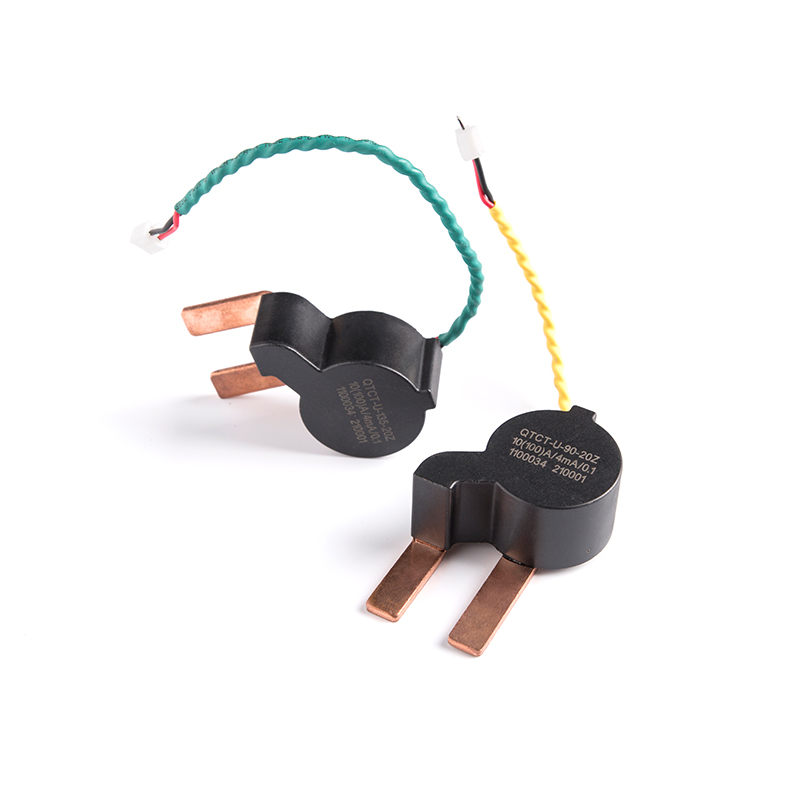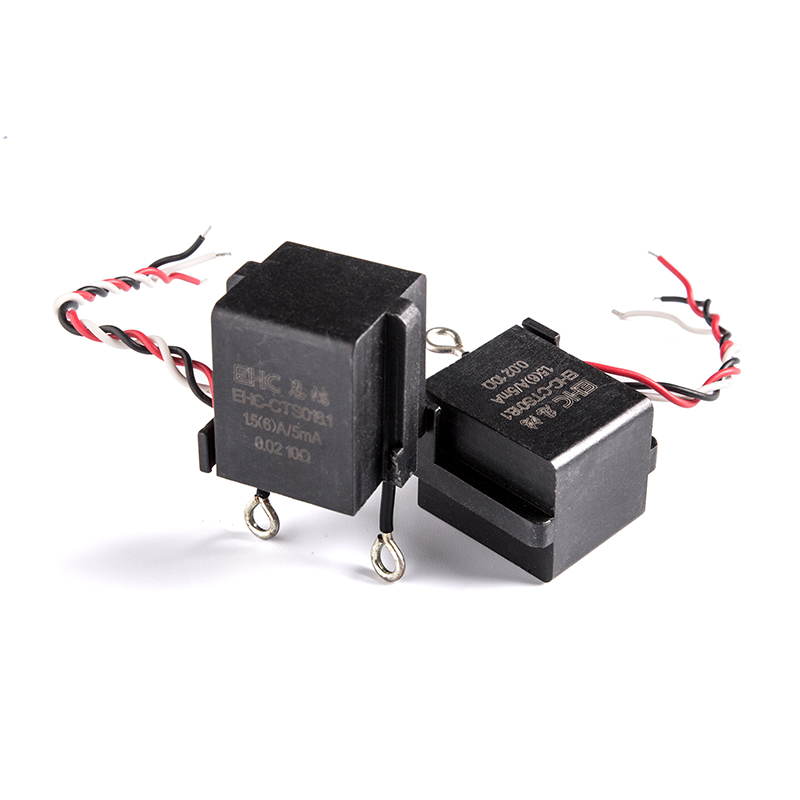A current transformer (CT) is an electrical device used to measure alternating current (AC) by transforming a high primary current into a lower secondary current proportional to the primary current. CTs are commonly used in electrical systems for various purposes, such as metering, protection, and control. A typical current transformer's construction consists of several key components and elements:
Core: The core is a crucial part of the CT and is usually made of ferromagnetic material, such as iron or a laminated core. It provides a low-reluctance path for the magnetic flux generated by the primary current, ensuring efficient induction of the secondary current. Cores can have various shapes, including toroidal (ring-shaped) and rectangular.
Primary Winding (Primary Coil): The primary winding is a single turn or a few turns of a thick conductor (typically copper or aluminum) that passes through or around the core. It carries the primary current that needs to be measured or monitored. The number of primary turns determines the CT's turns ratio and current rating.
Secondary Winding (Secondary Coil): The secondary winding consists of many turns of a fine conductor (also typically copper or aluminum) wound around the core. It carries the secondary current, which is proportional to the primary current based on the turns ratio. The turns ratio determines how much the primary current is reduced.
Insulation: Insulation materials, such as varnish or enamel, are applied to the windings to electrically insulate them from each other and from the core. This prevents short circuits and ensures proper performance.
Burden: The burden refers to the load impedance connected to the secondary winding. It includes the resistance and any external devices (e.g., ammeters or relays) connected to the CT. The burden determines the accuracy of the CT, as it affects the voltage drop across the secondary winding.
Secondary Terminal(s): The secondary terminals are the points where the secondary winding is connected to external circuits or devices. They typically consist of screw terminals, binding posts, or leads that allow for easy connection.
Nameplate or Label: The CT often has a nameplate or label that provides essential information, including the CT's rating (such as current ratio and accuracy class), manufacturer details, serial number, and standards compliance.
Core Window: In toroidal core CTs, the core window is the opening in the core through which the primary conductor (conductor carrying the primary current) passes. Proper alignment of the conductor within the core window is crucial for accurate measurement.
Mounting Bracket or Case: Some CTs come with mounting brackets or cases for installation purposes. The case provides protection for the CT components and insulation for safety.
Lead Wires: In some CT designs, lead wires are attached to the secondary terminals to facilitate easy connections to external devices or circuits.
Grounding Connections: CTs may include grounding connections or provisions to ensure safe electrical grounding, especially in high-voltage applications.
Core Clamping Mechanism: In split-core CTs, a core clamping mechanism allows for easy installation and removal of the CT without disconnecting the primary conductor.

 English
English 中文简体
中文简体 Deutsch
Deutsch 日本語
日本語

 View More >>
View More >> View More >>
View More >> View More >>
View More >> View More >>
View More >> View More >>
View More >> View More >>
View More >> View More >>
View More >> View More >>
View More >>